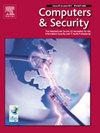网络物理系统中恶意软件传播建模与混合控制的新成果
IF 4.8
2区 计算机科学
Q1 COMPUTER SCIENCE, INFORMATION SYSTEMS
引用次数: 0
摘要
网络物理系统(cps)的结构特点使其容易受到恶意软件的攻击。为了研究恶意软件在cps中的传播行为,我们提出了一种新的恶意软件传播模型,称为易感-感染-增强感染-隔离-恢复-易感(SI2QRS)模型。首先,考虑到恶意软件在传播过程中传染性可能增强的特点,SI2QRS模型具有两种不同的感染率。导出了模型的平衡点和基本再现数。其次,利用稳定性理论和分岔定理分析了系统的动力特性。针对时滞系统可能产生的分岔和混沌问题,提出了一种新的混合控制器来控制Hopf分岔的阈值。最后,仿真结果表明,该控制器通过延迟Hopf分岔阈值使模型达到稳定状态,验证了理论结果的有效性。本文章由计算机程序翻译,如有差异,请以英文原文为准。
New results on modeling and hybrid control for malware propagation in cyber–physical systems
The structural characteristics of cyber–physical systems (CPSs) make them vulnerable to malware attacks. In order to study the propagation behavior of malware in CPSs, we propose a new malware propagation model, called Susceptible–Infected–Enhanced Infected–Quarantined–Recovered–Susceptible (SI2QRS) model. First, considering the feature that the infectiousness of malware may be enhanced during the propagation process, the SI2QRS model has two different infection rates. And the equilibrium points and the basic reproduction number of the model are derived. Second, the dynamic behavior is analyzed using stability theory and the bifurcation theorem. Given the bifurcation and chaos may arise in systems with time delay, a new hybrid controller is proposed to control the threshold of Hopf bifurcation. Finally, the simulation results show that the controller can bring the model to a stable state by delaying the threshold of Hopf bifurcation, which verifies the validity of the theoretical results.
求助全文
通过发布文献求助,成功后即可免费获取论文全文。
去求助
来源期刊

Computers & Security
工程技术-计算机:信息系统
CiteScore
12.40
自引率
7.10%
发文量
365
审稿时长
10.7 months
期刊介绍:
Computers & Security is the most respected technical journal in the IT security field. With its high-profile editorial board and informative regular features and columns, the journal is essential reading for IT security professionals around the world.
Computers & Security provides you with a unique blend of leading edge research and sound practical management advice. It is aimed at the professional involved with computer security, audit, control and data integrity in all sectors - industry, commerce and academia. Recognized worldwide as THE primary source of reference for applied research and technical expertise it is your first step to fully secure systems.
 求助内容:
求助内容: 应助结果提醒方式:
应助结果提醒方式:


